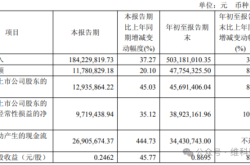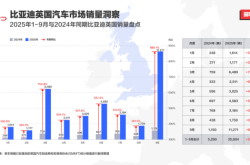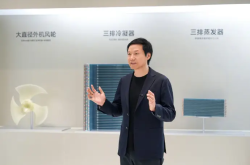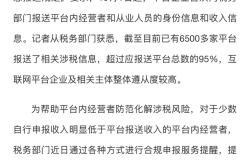How vivo's Technological 'Flying Geese Formation' Reconstructs the Smart Ecosystem, from Mobile Phones to Home Robots
![]() 03/27 2025
03/27 2025
![]() 420
420
Amidst the wave of AI transformation, smartphone manufacturers are thriving in the realm of smart hardware, yet the next step that will ignite the market has become the focal point of attention.
On the opening day of the Boao Forum for Asia, the enigma was unveiled. The rumors circulating in the industry about vivo's involvement in robotics were officially confirmed at this forum.
Hu Baishan, Executive Vice President and Chief Operating Officer of vivo, and Dean of vivo Central Research Institute, announced the establishment of the Robotics Lab, marking vivo's formal entry into the robotics field. He stated, "The deployment in robotics is highly aligned with vivo's accumulated expertise in the mobile phone industry and deeply consistent with vivo's business philosophy of fostering industrial co-prosperity."
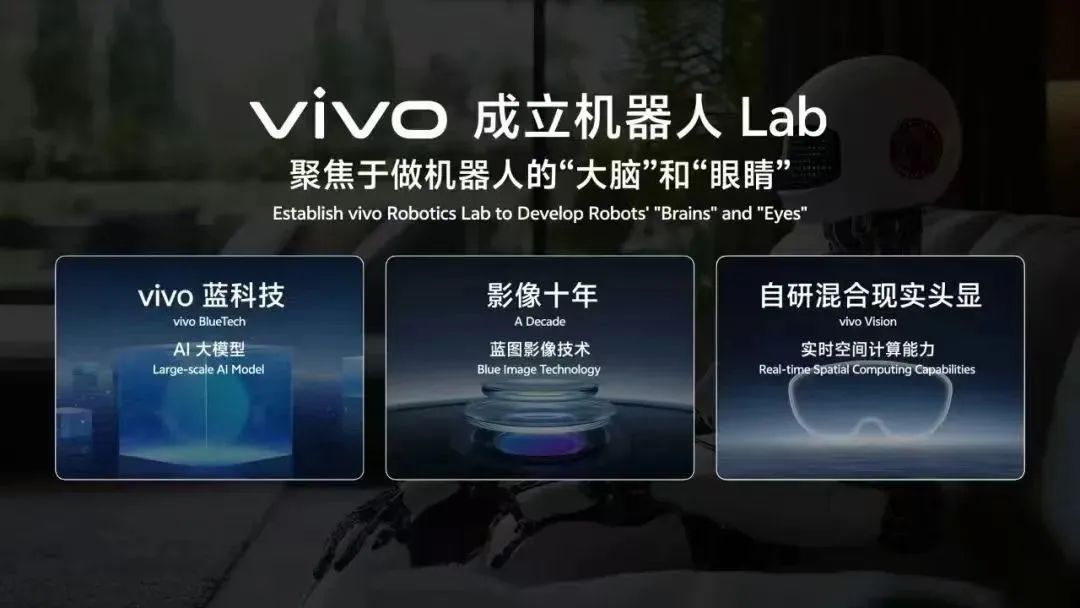
Unlike most companies pursuing concepts such as 'humanoid' and 'realistic,' vivo's approach this time is notably pragmatic: steering clear of the competitive automotive market, focusing on the core strengths of AI, imaging, and 6G technology, and targeting the 'last mile' needs of individuals and family scenarios.
According to IDC data, the global robotics market is projected to exceed $30 billion by 2025. However, the reality of mismatched supply and demand has plagued the industry: among the 450,000 robotics enterprises worldwide, 80% are concentrated in industrial and commercial scenarios, while the seemingly vast 'blue ocean' of the home market has proven to be the toughest nut to crack due to technical complexity and scenario fragmentation.
In fact, vivo's choice is not coincidental. There is a natural synergy between the mobile phone industry and the robotics industry. The visual perception, edge AI, and communication coordination capabilities honed in the former are precisely the keys to overcoming the scenario adaptability bottleneck in the latter. Comparatively, while the automotive sector may be hotter, it essentially operates within the mobile phone ecosystem.
For the industry, what has been lacking is precisely this pragmatic attitude of 'talking less about disruption and more about solutions.' In an aging China, where most companies are obsessed with technical parameter competitions, a robot that can assist with turning over and administering medication is far more practically significant than a dancing 'humanoid toy'.
In the view of New Position, vivo's official announcement, which commenced at Boao, is more akin to a reshaping of the industry's value logic than a strategic choice by a single enterprise: Robots should not be replicas of humans but rather handy tools for real life.
01. The Robotics Industry Needs a 'Weed Out the False and Retain the True' Revolution
The home robotics market is mired in a collective dilemma.
According to the "China Time Use Survey Report" released by the National Bureau of Statistics, Chinese residents spend an average of 1 hour and 59 minutes per day on housework, with cooking, cleaning, and elderly care accounting for over 70% of these activities. However, among existing home robotics products, 80% of functions are still limited to single scenarios such as sweeping and mopping, while the coverage of complex tasks that users truly desire (such as cooking assistance and elderly care) is less than 20%.
The root cause of this supply-demand mismatch lies in the industry's obsession with a 'technology-centric' mindset. Manufacturers are enthusiastic about comparing parameters (number of joints, number of AI model parameters) but overlook the dynamics and scenario nature of family life. The proliferation of such 'pseudo-demands' is essentially the product of crudely transplanting laboratory technology to home scenarios.
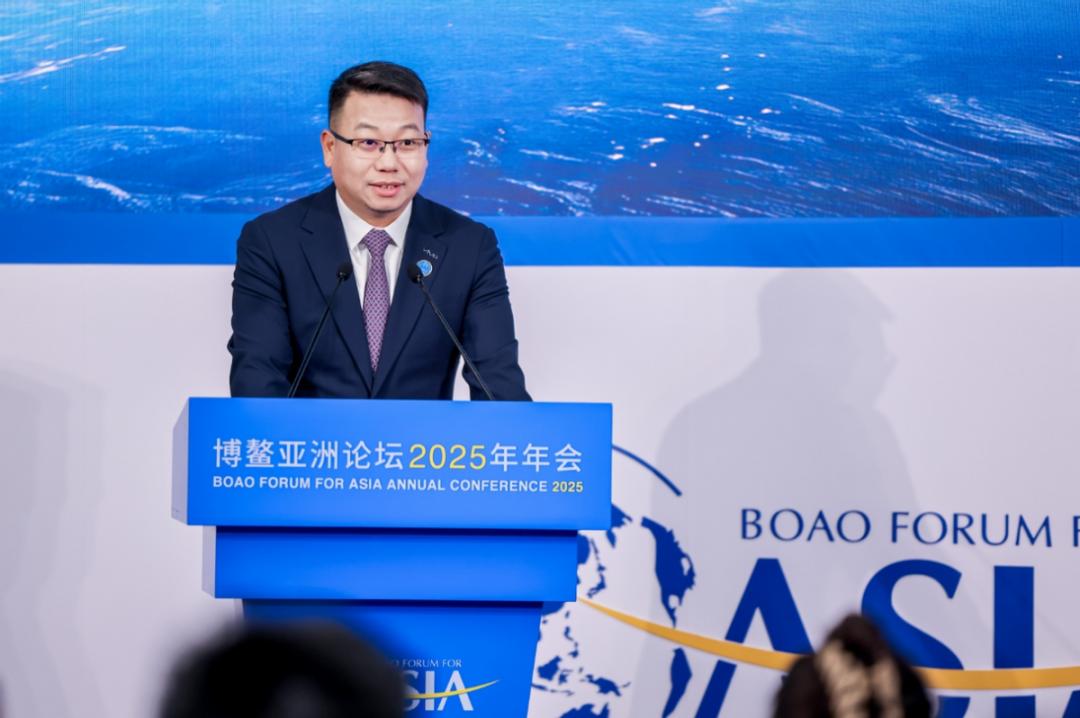
The core issue is technological fragmentation. AI, machinery, and communication capabilities operate independently: Large models can understand complex instructions but are limited by hardware computing power; robotic arms can accurately grasp objects but struggle to integrate into dynamic home environments; 6G networks theoretically support remote collaboration, but the risk of privacy leakage deters users. This 'single-point breakthrough, system lag' status leads to products being caught in the dilemma of 'high IQ, low EQ'.
A glaring divide is formed between the 'pseudo-demands' piled up by technology and the 'real pain points' expected by users.
As for why vivo chose to enter the 'home robotics' sector when smartphone manufacturers are crossing over to car manufacturing, New Position believes it can be interpreted from two dimensions: technological adaptability and user value.
Technologically, automobile manufacturing relies on heavy asset investments (such as batteries and chassis), while vivo's AI, imaging, and communication capabilities accumulated in the mobile phone field are highly aligned with robotics needs. For instance, its self-developed VCS bionic spectral technology can enhance recognition accuracy in low-light environments, SLAM spatial modeling capabilities enable centimeter-level navigation, and 6G communication and sensing integration technology ensures low-latency, high-privacy data transmission. These capabilities directly serve the dynamic needs of home scenarios.
On the other hand, vivo's 500 million smart device user base provides it with a treasure trove of data for home scenarios. From the path preferences of sweeping robots controlled by mobile apps to the activity patterns of the elderly monitored by health bracelets, these real behavior data are providing precise references for robotics research and development. In contrast, as an independent mobile space, cars have weaker linkage with the mobile phone ecosystem, making it difficult to form a closed-loop experience of 'entrance-service-feedback'.
In vivo's perspective, robots should not be a patchwork of technologies but a systematic solution to user scenarios. Ultimately, this choice is underpinned by vivo's consistent user-centric ethos. From the ultra-long standby time in the feature phone era to the imaging breakthrough in the smartphone era, its technological evolution has always centered around 'solving real user pain points.' The deployment in home robots is no exception: It is not about chasing trends but returning to the unsatisfied needs in home scenarios.
For example, the shortage of caregiving manpower in an aging society, the housework burden of dual-income families, and barrier-free support for special groups... The value of home robots lies not only in commercial returns but also in social benefits. With over 280 million people aged 60 and above in China and a shortage of 20 million elderly care workers, a home robot that can assist with turning over, feeding medication, and making emergency calls is more practically significant.
The height of technology determines the boundaries of an enterprise, and the depth of responsibility defines industrial value. Often, true industry revolutions begin by tearing off the 'technology-first' label.
02. A Long-Planned 'Technological Uprising'
There has always been a simple truth in the field of technological innovation: The best technologies are always those that are needed rather than discussed.
The technological revolution in home service robots is essentially a war about 'capability reuse.' When the industry is still fixated on realism, vivo chose to systematically migrate the AI, imaging, and communication capabilities honed in the mobile phone era to three-dimensional application levels, using proven technologies to solve unsatisfied needs.
As early as March 2018, vivo established the AI Global Research Institute. This interdisciplinary R&D matrix has continued to evolve through the four-dimensional strategy of 'talented personnel, comprehensive data, strong algorithms, and sufficient computing power.' By the end of 2024, it had formed a technical team of over 2,000 people, 70% of whom hold doctorates in cutting-edge fields such as machine learning and natural language processing. Cumulative investments over six years exceeded 23 billion yuan, with annual AI-specific budgets maintained at 2-3 billion yuan, building the most comprehensive large model R&D ecosystem among domestic mobile phone manufacturers.
This 'oversaturated investment' strategy achieved a key breakthrough in 2023, when vivo launched the world's first five-tier large model matrix 'Blue Heart,' covering parameter scales from 1B to 1750B, achieving a groundbreaking end-cloud collaborative architecture. The following year, this system was upgraded to the 'Blue Heart Wisdom' strategy encompassing language, speech, image, and multimodal capabilities. Its 100 billion-level cloud model has firmly established itself in the first tier of Chinese large models.
More notably, its edge deployment capabilities utilize a unique 'heterogeneous computing compression algorithm' to compress a 3 billion-parameter model to 1.4GB of memory usage, with a response speed of 80 words per second, earning comprehensive edge model capability certification in the Thalys Laboratory evaluation. These capabilities are needed by robots and are vivo's strengths, all of which can be reused and collaborated in the robotics industry.
More importantly, the application of AI in robots also solves the long-standing computing power problem of edge AI in the mobile phone industry. Hu Baishan used the analogy of a laptop and a desktop to vividly explain the difference in computing power provided by mobile phones and robots.
Taking the vivo X100 series as an example, the Blue Heart large model it carries can optimize imaging and voice interaction but still struggles with complex scenario understanding. The hardware freedom provided by robots (such as external computing units and active cooling systems) allows them to run large models with billions of parameters and can even feed back algorithms to mobile phones through scenario training. For instance, an object recognition model trained in a home environment can be compressed and adapted to the mobile phone album classification function.
The migration of imaging technology has even greater strategic value. VCS bionic spectral technology extends from mobile phone photography to robot environmental perception, enabling the recognition of reflective differences of different ground materials (such as wooden floors and tiles) to optimize cleaning paths; SLAM spatial modeling technology upgrades from mobile phone AR navigation to the core capability of robot autonomous obstacle avoidance. This reuse is not a simple transplant but a secondary evolution centered around home scenarios.
vivo's progress in MR vision has also been smooth, with a current team of nearly 500 people. At the 2025 exhibition area of the Boao Forum for Asia, vivo publicly displayed its mixed reality headset for the first time, marking a significant achievement in the MR field. As Hu Baishan said, 'The spatial perception capabilities of MR are very strong. Once MR is well-developed, there won't be any issues with the spatial perception capabilities of robots'.
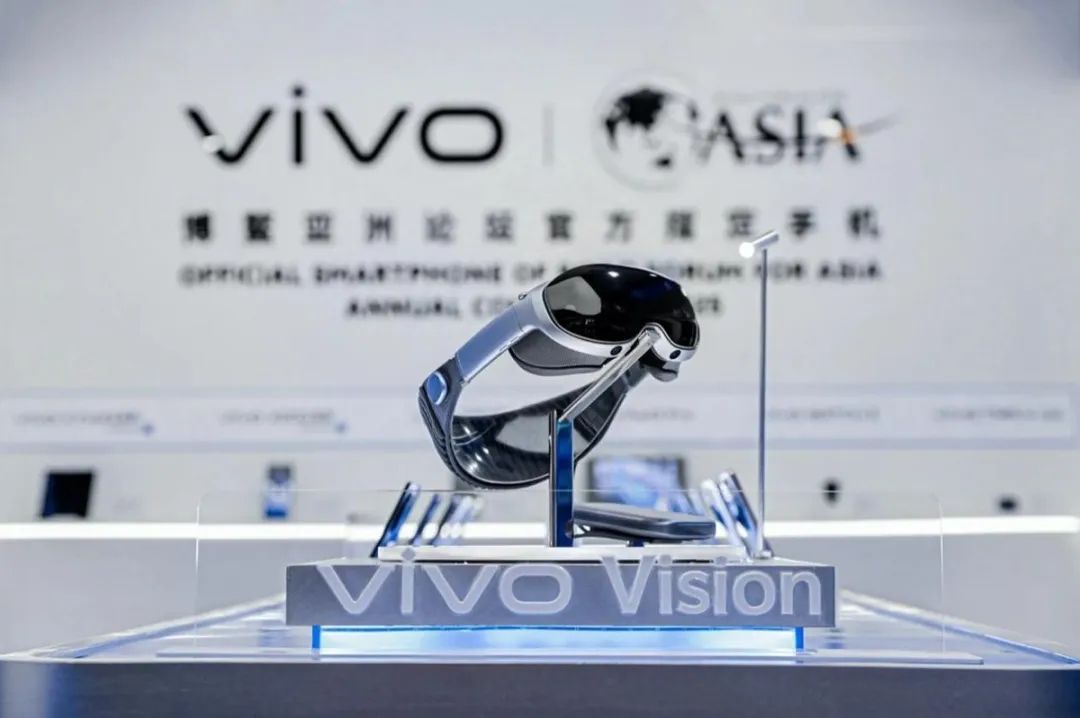
In the future, through gesture recognition and spatial perception of MR devices, users can monitor the working status of robots in real-time and adjust tasks with gesture commands. They can even draw virtual restricted areas in the air, and robots can avoid these areas.
Undoubtedly, this 'perception-decision-execution' closed loop indirectly verifies the potential of the implementation of integrated perception technology.
After all, the linkage between mobile phones and robots is essentially an extension of user needs from a two-dimensional screen to a three-dimensional space. vivo's 500 million smart device user base has built a unique data map of home scenarios for it: The path of sweeping robots controlled by mobile apps and energy consumption records of smart sockets can reflect the usage patterns of home spaces; the activity trajectories of the elderly monitored by health bracelets and high-frequency commands of voice assistants can reveal the priority of users' real needs; the body movements and gaze foci collected by MR devices can provide clues for robots to understand intentions...
In turn, these data have further transformed the R&D logic of the industry. For example, by observing the difference in the use of underfloor heating in winter between northern and southern families, the humidity parameters of cleaning robots can be dynamically adjusted, or obstacle avoidance algorithms can be optimized for families with multiple children. This 'data-driven' model will bring technology closer to life.
However, mass production still faces the bottleneck of mechanical performance. For instance, the precision error of bionic joints is difficult to meet the needs of complex home scenarios. To this end, vivo has adopted two strategies: one is talent reservation, with vivo globally recruiting robotics experts at a salary of millions of yuan, focusing on motion control and materials engineering; the other is industry collaboration, such as jointly tackling joint precision with the Department of Mechanical Engineering at Tsinghua University and cooperating with China Mobile to develop 6G communication protocol standards to ensure the stability of multi-device collaboration.
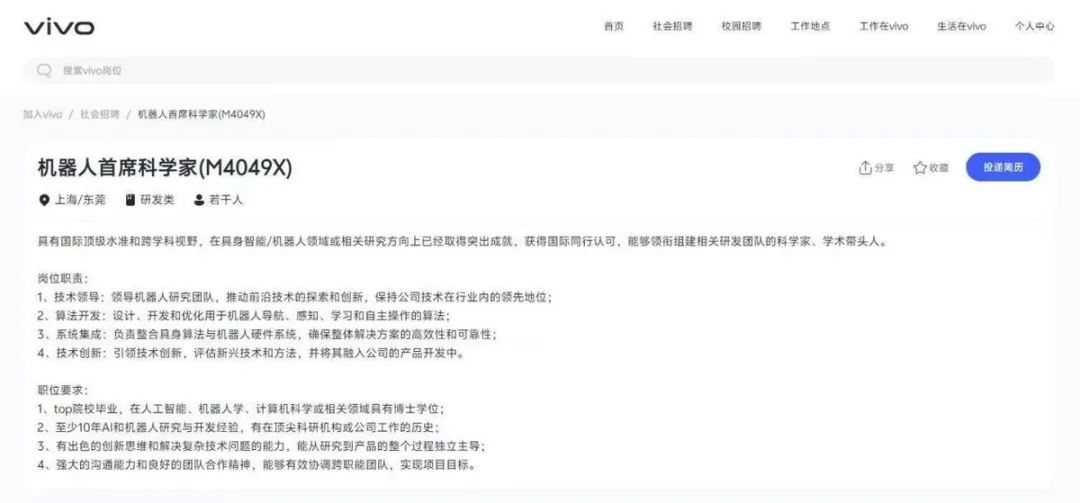
This 'technology + standard' dual-wheel drive will undoubtedly significantly shorten the distance between the laboratory and mass production. Behind this strategic choice lies the unique methodology precipitated by the 30-year evolution of the consumer electronics industry, which is the ability to encapsulate complex technologies into standard modules.
When technology, demand, and industry achieve precise engagement, vivo's 'technological uprising' becomes a natural progression.
03. From 'Technological Monologue' to 'Industrial Dialogue'
Undoubtedly, it is not easy for breakthroughs in single-point technologies to propel large-scale implementation. True competitiveness stems from the ability to build an ecosystem.
Despite the industry's flourishing growth, vivo remains steadfast to its 'original aspiration.' It recognizes the immense complexity of robot development, backed by a vast ecosystem that cannot be solely managed by one or a few companies. As robots grow more sophisticated, collaboration with a broader spectrum of industrial partners becomes imperative.
This approach aligns with vivo's 30-year developmental ethos, where technological advancements have always centered on 'meeting users' needs, not merely catering to their wants.' The foray into robotics is a logical extension of this philosophy.
vivo's mission has consistently been to bridge technological silos rather than reinventing the wheel. Similar to how vivo does not manufacture screens or chips but builds an ecosystem through open collaboration, it showcased its positioning at the MR exhibition area of the Boao Forum: Focusing on AI and imaging modules, the 'brain' and 'eyes,' while leaving mechanical hardware to specialized partners.
vivo opts for long-term investments in its technological expertise, leveraging its advantages and fortifying its technological barriers. Simultaneously, it refrains from venturing into hardware areas like robotic arms and bodies, leaving these to more specialized partners within its industrial chain. This strategy mirrors Apple's approach to iPhone production, where controlling core capabilities like the system and chips minimizes heavy asset investments, thus saving costs.
Today, vivo's role as a 'connector' is reshaping industry norms. For instance, the Blue Heart large model open platform has attracted numerous developers, nurturing applications such as elderly-friendly voice interaction and childcare alerts. A third-party report reveals that vivo has spurred product upgrades among over 200 small and medium-sized manufacturers through technological openness over the past decade. Its strategy of 'not manufacturing screens or chips, but emphasizing the value of connectivity' is being replicated in the robotics sector.
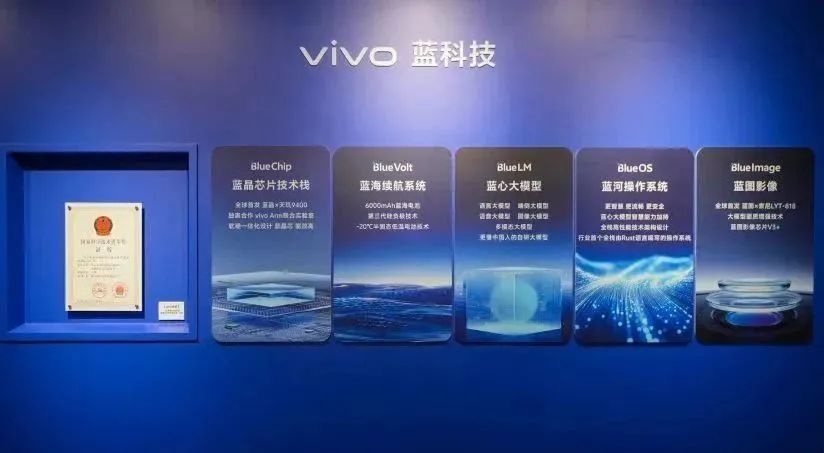
vivo's 30-year technological accumulation is essentially a marathon of fostering ecological capabilities.
The true challenge in the home robotics industry has never been the technology itself but rather the value distribution mechanism. While Tesla's Optimus struggles with high costs, vivo significantly reduces partners' expenses through modular solutions. When most companies treat data as proprietary, vivo's Blue Heart platform chooses to open up parts of its training dataset. This mindset of 'sharing rather than monopolizing' may hold the key to breaking the mass production curse.
Moreover, altruism, where collective effort lightens the load, is another vital external manifestation of vivo's 'original aspiration' culture, amply demonstrated in the mobile phone industry.
Dongguan's Chang'an Town epitomizes China's consumer electronics industrial chain. Here, leading listed companies like Jie Rong Technology, Xiangxin Technology, and Yutong Optics, alongside numerous small enterprises in hardware, packaging, electroplating, and other sectors, abound. Driven by the mobile phone industrial chain, Chang'an Town's GDP reached 105.07 billion yuan in 2024, making it a leading town in Dongguan.
The mobile phone industry chain not only supports the livelihoods of millions of workers and practitioners but also feeds back into other industries, becoming a crucial driver for China's participation in global market competition. From chips, memory, cameras, and batteries to manufacturing processes like anodizing, CNC, and injection molding, virtually all mobile phone-related technologies eventually find widespread application, benefiting other fields.
New Stance believes that the best technology is always one that emerges from the participation of many. The future of household service robots does not hinge on the technological prowess of a single enterprise but on the vitality of the entire ecosystem.
vivo's "Industry Dialogue" experiment essentially addresses a fundamental question: When technology shifts from a monologue to a dialogue, can the industry find common ground for commercial value and social responsibility? The answer might be embedded in a core concept from its mobile phone era - "Sharing joy is better than enjoying it alone, and coexistence is preferable to going it alone."
04. Concluding Thoughts
When Sony discontinued its first-generation robot dog AIBO in 2006, outsiders mocked it as a "defeat of idealism." Nearly two decades later, this once-dismissed "toy" has become a crucial technological asset for Japan to address an aging society.
The paradox in the tech industry often lies in the fact that the most pragmatic innovations often emerge at the fringes of idealism. vivo's strategy of "gradual breakthroughs and laying eggs along the way," announced at Boao, to some extent, aligns with this hidden path of industrial evolution: True technological inclusion does not reside in the grandeur of parameter tables but in its ability to seamlessly integrate into life like oxygen.
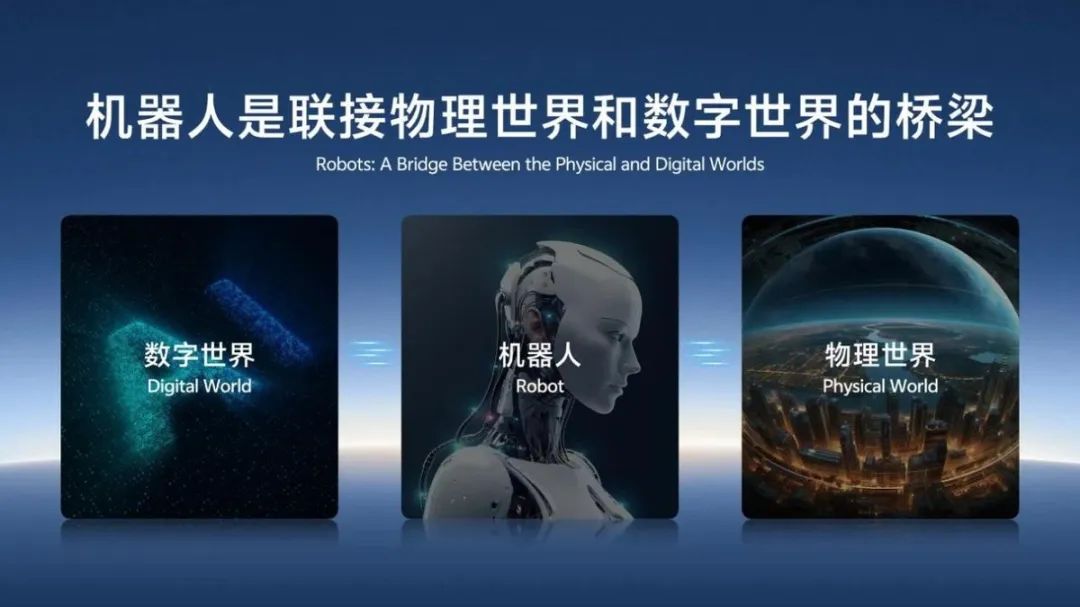
Throughout the history of consumer electronics, industry-altering decisions are often characterized by "anti-consensus." Apple's decision to abandon car manufacturing and pivot to robot R&D, and Tesla's controversy over its insistence on a humanoid form, are different interpretations of the anchor point of technological value. vivo's choice to focus on the "brain" and "eyes" reflects its reverence for the laws of industrial chain division of labor. This restraint in "doing and not doing" is particularly valuable amidst today's technology giants, many of whom are keen on closed ecological loops.
From a broader temporal and spatial perspective, the ultimate question for technology enterprises has never been "what can be done" but "what should be done."
vivo's answer lies in its unwavering product philosophy spanning three decades: exercising restraint amidst the technological whirlwind and adhering to one's duties in the commercial tide, making every innovation a bridge connecting people and life.
Perhaps, as the engineer lamented when Sony AIBO was restarted, "We are not creating a new species but repairing the fault line between technology and humanity." vivo's entry into the household robot market is essentially a continuation of the most authentic mission of consumer electronics - to demystify cutting-edge technology and make it an accessible life companion for millions of households.
This path may not yield revolutionary breakthroughs, but as technological evolution and humanistic care converge, those choices once derided as "not sexy enough" will ultimately reveal prophetic insights in the vast expanse of time.
* The title image and images in the text are sourced from the internet.

